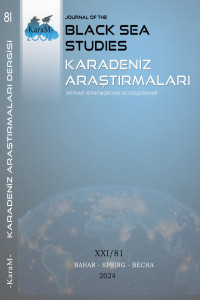HAKAS MASALI “ZENGİNLE AVCI”NIN VLADİMİR PROPP’UN YAPISAL ANLATI ÇÖZÜMLEME YÖNTEMİ KAPSAMINDA İNCELENMESİ
AN EXAMINATION OF KHAKAS TALE “ZENGINLE AVCI” WITHIN THE SCOPE OF VLADIMIR PROPP'S STRUCTURAL ANALYSIS METHOD
Author(s): Emine GüvenSubject(s): Studies of Literature, Turkish Literature, Other Language Literature, Structuralism and Post-Structuralism
Published by: Karadeniz Araştırmaları Merkezi
Keywords: tale; Vladimir Propp; Khakas tales;
Summary/Abstract: Tales, which are short stories that contain imaginary or fantastical elements and have a plot, are cultural artifact that contributes in many ways the development of children and society. Metaphors, parables, and other literary figures the tales are passed down from generation to generation through the power of language, forming a legacy of the past and present, and reflecting the values, traditions, and identity of a society's culture. Tales are considered important sources of information for societies and are therefore studied and analyzed by researchers using various methods. The method of "structural narrative analysis" by Vladimir Propp is also a method that should be evaluated in this context. This method can be used to explain the basic structure of narratives, the motifs recurring in different narratives, and the underlying structure of events. Propp's method is also valuable because it is a model for the analysis of narratives and for the analysis of literary studies, that is, it can be applied in many fields. Many tales in Turkey Turkish have been examined with the method of "Structural Narrative Analysis". In this study, I analyzed the tale "Paynañ Añcı" (The Rich and the Hunter), which is a tale belonging to Khakas Turkish, one of the distant dialects of the Turkish language / Northeastern (Siberian) branch of the Turkish dialects, with the aforementioned method. Within the framework of V. Propp's method, I questioned the existence of common functions in the world's tales in the Khakas tales. I examined whether Khakas Turkish has interesting data (motifs, mythological elements, etc.) when the oral culture products (epics, stories, tales, etc.) that it has preserved due to the fact that it has continued to exist in the oral culture circle for a long time without the limitation of the written language.
Journal: Karadeniz Araştırmaları
- Issue Year: 2024
- Issue No: 81
- Page Range: 53-68
- Page Count: 16
- Language: Turkish

